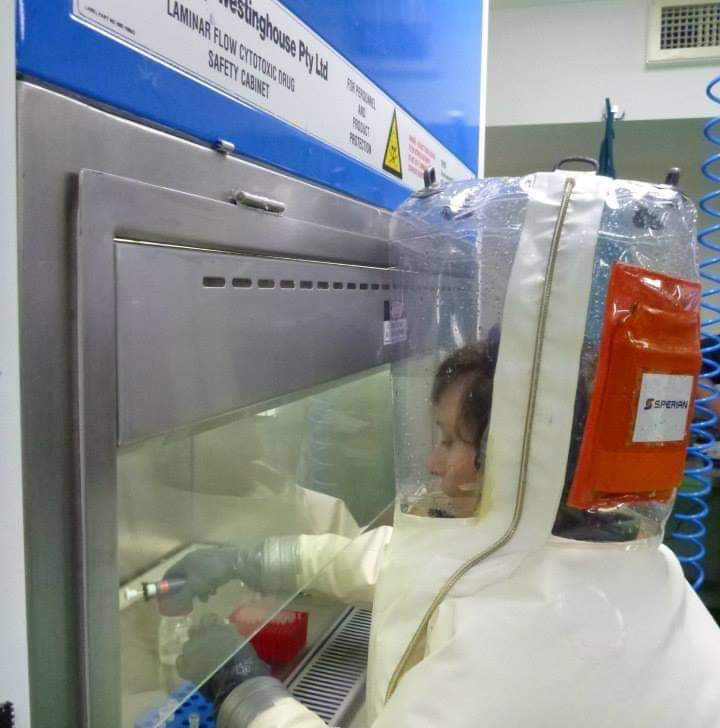Lela Urushadze, an employee of Richard Lugar Center for Public Health Research, published this post on social media.
Today our group is on duty. There are six of us in the safety zone: Me, Jasho, Khmalika, Meko, Gvantsa and Natalia.
11 a.m. There are already 92 samples. One of us sits in the boxed safety cabinets, the second dictates the data, the third completes the reaction samples outside, and one enters the data. Chichki from reception sticks his head through the window opening and gives us additional samples: First, 60 more were added, then 70… 80 and etc…. After about 4 hours, Jasho murmurs in his boxed cabinet that he is very thirsty, and I immediately offer to stand in for him and admonish him that it’s not right to overwork, to which he comes back with the same accusation that we, too, should be thirsty and if that’s the case should take our own advice and take a break. And since the prep work of taking off PPE (personal protective equipment), sanitizing oneself, and then once again gearing up to re-enter the cabin is such a time-consuming task, he prefers not to drink his water at all. This has become our daily normal.
So we beat on against the currents. At last, the first batch of 92 samples are released for reaction and we come out of the safety zone to take a short break only to be met by an inquisitive journalist waiting there. “Can we film how you guys are taking breaks?” At this point, we get rid of her with a frown and slightly rudely. But we realize that our impoliteness is just a result of fatigue and maybe because of an annoying new media trend of labeling us as “heroes.” At the end of the day, this is not heroism, but a professional path of our choosing, our direct obligation.
10 p.m. By this time, 310 samples have already been processed, but 75 more have just arrived. Before wrapping up in PPE and re-entering the safety cabinets zone, Khmalika calls her mom to ask if her 3-year-old daughter has already gone to sleep. Our moms and dads call us, to ask if we are safe, if we have eaten anything, when are we going to get back home, when will we be able to rest and recharge. Oh, by the way—food supply is not a problem thanks to numerous organizations, kind colleagues and considerate unnamed strangers :).
11 p.m. Results are in—17 positive. We get nervous and check the sample origins. All of them are of existing patients who are already in hospitals and under care. This means that there are no new cases from today’s batch. This is the time, after 12 hours, when we allow ourselves to smile, share a victory dance and joy. This is such a relief, such great news.
11:30 p.m. We call our epidemiologist colleagues on mobile duty. Gori region samples are on the way, so are Bolnisi region samples; Marneuli region samples will be on the ground in 30 minutes. These days, that’s the limit of what we have to share with our trusted friends and colleagues.
Administration calls us and tells us to go home, not to get overworked, but we don’t want to leave a lot of tasks for the next day’s duty group, and the doctors are also waiting for an answer. So we start over, set new samples and wait for new answers. We hope to get fewer positives again. We are lucky! Only 20 new cases out of 440.
4 a.m. I enter my isolated apartment. There is a paper note on the kitchen table which reads “I love you Mum.” Next to it is my child’s first attempt at making a pancake. Wow, that’s my baby! ❤
Before going to bed, I scroll through my Facebook feed and find a post that claims it’s impossible that we have only a few dozen positive COVID patients per day, and why our Lab is hiding results. I don’t even have the energy and emotional capacity to get angry at this point.
I just remembered how today, the youngest in our lab’s duty group, Gvantsa, turned 25! At 12pm, together, we lit a candle on a cake in Lugar.

